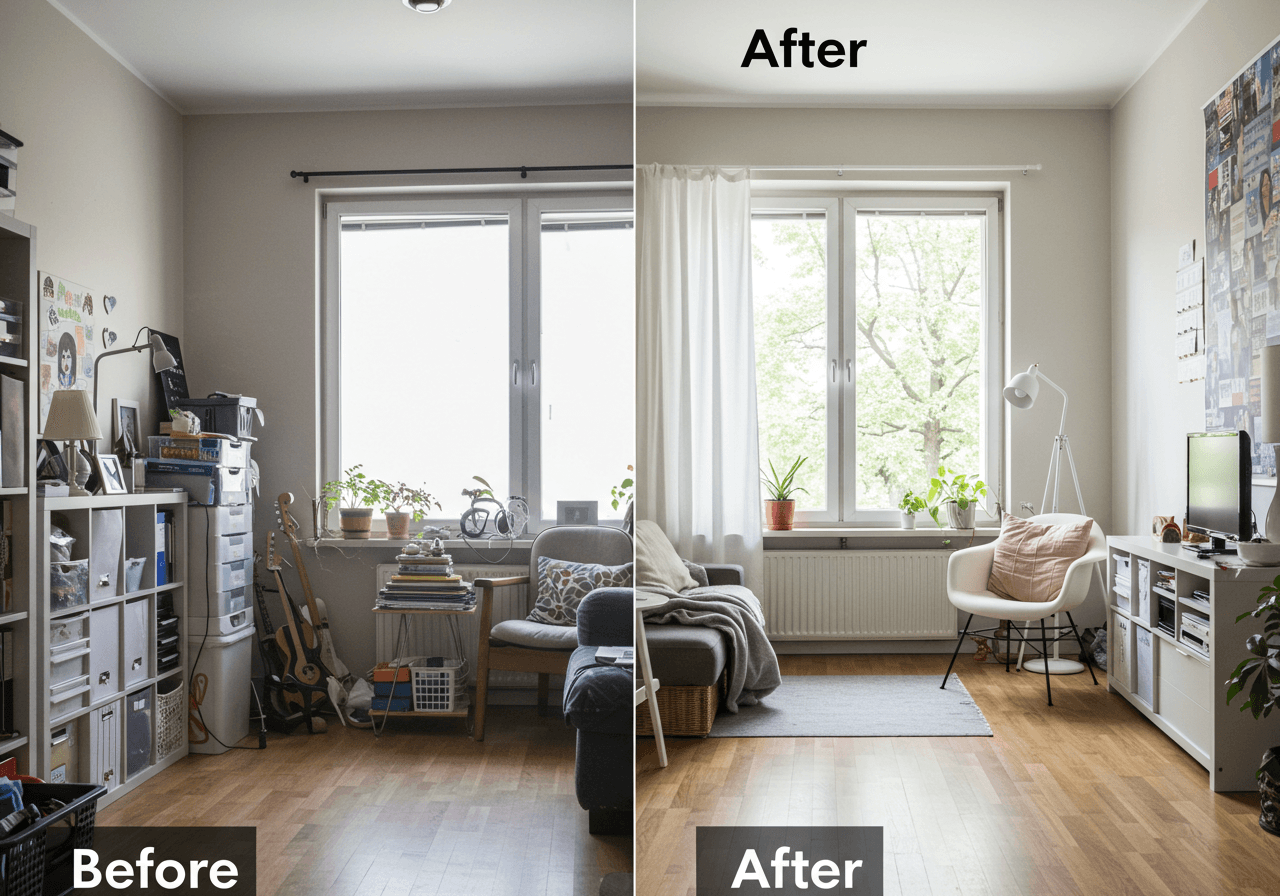Table of Contents
In today’s fast-paced world, clutter in both physical and mental spaces can significantly contribute to stress and disorganization.
Creating both physical and mental clarity through decluttering can lead to increased calm and improved cognitive function.
When you focus on clearing your environment, you often find mental relief and the extra space to pursue new opportunities. This process offers a refreshing chance to reset your living and working areas, increasing productivity by removing unnecessary distractions.

Decluttering isn’t just about tidying up your home; it’s also about managing your mental and digital life.
By decluttering your physical space, you allow for energy to flow freely, which can positively impact your mental state. A well-organized physical space often translates to a clearer mind—helping you experience a healthier mental outlook and reduced stress levels.
The pursuit of mental clarity and organization extends beyond tangible spaces to include your digital world and personal relationships.
Simplifying your life in these areas can help manage stress and promote personal growth. As you explore the strategies to declutter your life, remember that adopting healthy habits and focusing on intentional living creates a foundation for long-term well-being.
Key Takeaways
- Decluttering your space improves mental clarity and reduces stress.
- Organizing digital and mental spaces enhances productivity and well-being.
- Simplifying your lifestyle fosters personal growth and healthier relationships.
Understanding Clutter and Its Impact
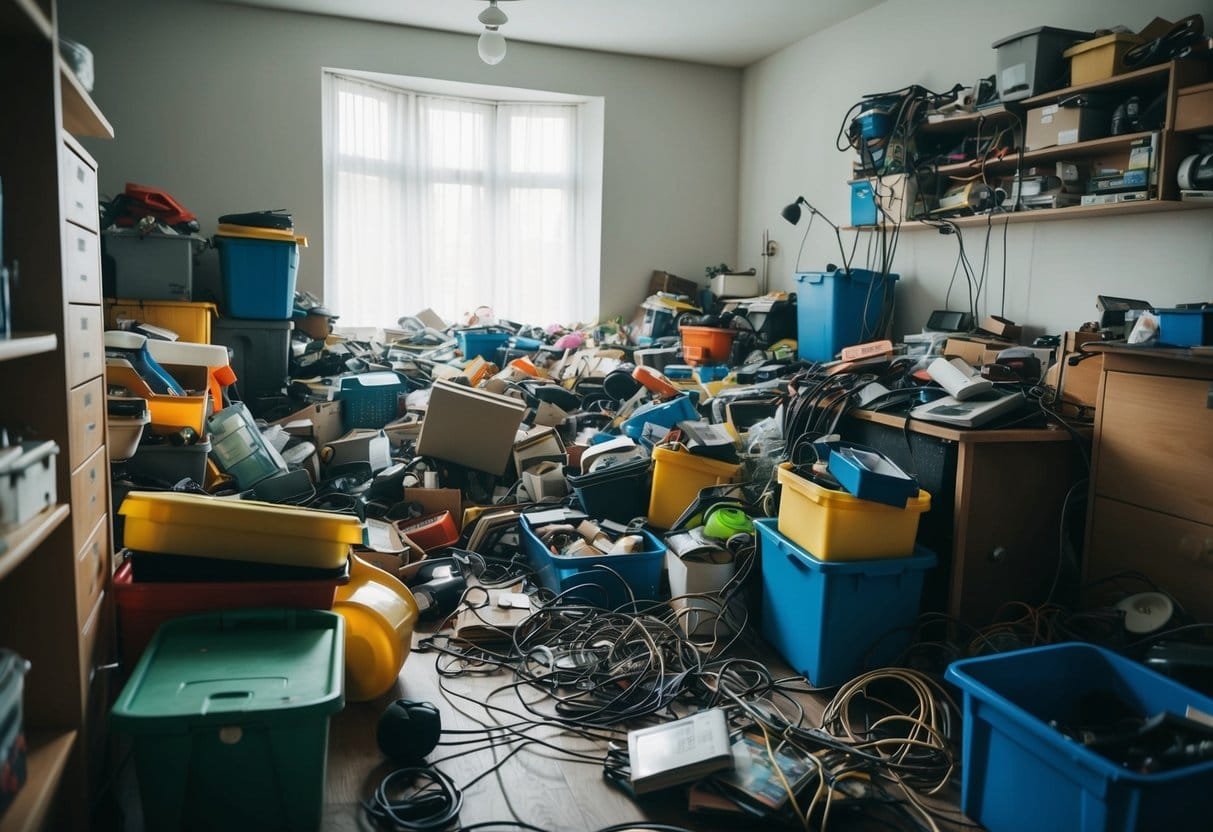
Clutter can affect your mental health, contributing to anxiety and cognitive overload. Addressing both physical and mental clutter can significantly improve your well-being and reduce stress.
Defining Clutter
Clutter isn’t just about having a messy space; it encompasses anything that disorganizes your life. This includes unnecessary possessions, unresolved tasks, and even digital chaos.
Items that no longer serve a purpose or add value to your life contribute to clutter, generating an overwhelming environment.
Recognizing clutter involves identifying what disrupts your daily routine and mental clarity. This understanding is crucial for anyone seeking to improve their quality of life through decluttering. Capturing the essence of clutter helps in taking precise steps toward a more harmonious living space.
Physical vs. Mental Clutter
Physical clutter refers to disorganized surroundings, such as a messy desk or overflowing closets. Such environments can heighten stress levels and create anxiety, affecting productivity.
Mental clutter, on the other hand, involves thoughts and mental distractions that hinder focus and decision-making.
By tackling both forms, you pave the way for better psychological well-being. Addressing physical mess can drive improvements in mental clarity. Recognizing the distinct effects each type of clutter has on your life can guide you in crafting effective strategies to tackle them both, potentially reducing feelings of overwhelm and depression.
Consequences of a Cluttered Environment
Living in a cluttered environment has tangible impacts on your mental health and daily efficiency. It contributes to stress and cognitive overload by making it difficult to locate items and prioritize tasks.
This often leads to heightened anxiety and diminished mental clarity. The accumulation of both physical and mental clutter can increase feelings of depression and overwhelm.
Alleviating these issues by organizing your environment offers numerous benefits. Focus and productivity can rise as the brain is less encumbered by distractions. As clutter diminishes, the opportunity for mental peace expands, showing that maintaining a tidy space could lead to significant mental health improvements.
Strategies for Decluttering Your Space
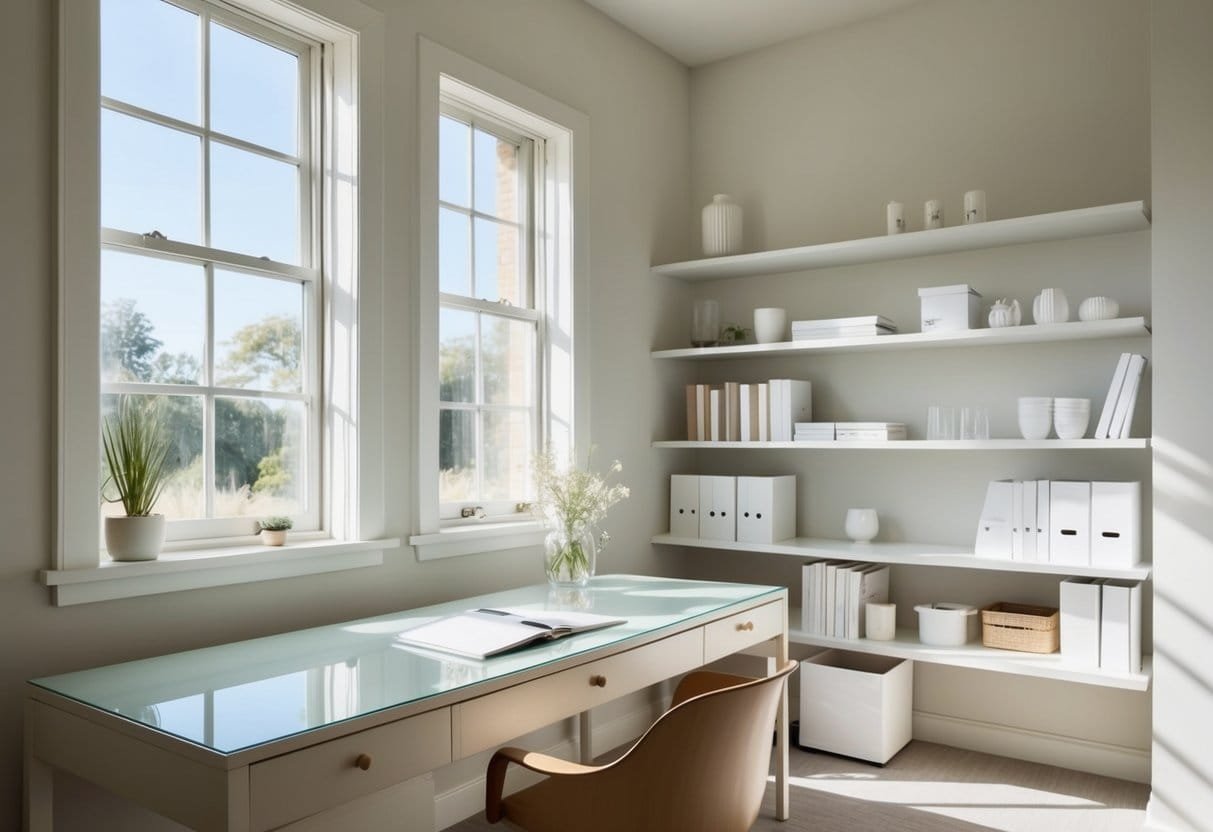
Creating a clutter-free space requires effective strategies such as initiating the decluttering process, organizing efficiently, and maintaining the results. Focus on prioritization, setting boundaries with possessions, and adopting a minimalist approach for sustainable success.
Getting Started with Decluttering
Begin by assessing the areas in your home that need attention. Prioritize spaces that impact your daily life, such as the kitchen or living room.
Establish a timeline and set realistic goals. A helpful tactic is the “four-box method,” where you categorize items into: keep, donate, sell, and trash.
Start small to avoid feeling overwhelmed. Dedicating a short period each day to decluttering can build momentum and prevent burnout.
Stay mindful of emotional attachments that may not serve your current lifestyle. Establish boundaries by asking if each item brings value or joy, aiding in your decision to keep or release it.
Creating an Organization System
Once you have decluttered, creating an efficient organization system is crucial.
Group similar items together and assign them specific places. Labeling bins and shelves can significantly enhance accessibility.
Vertical storage solutions and furniture with built-in storage can maximize space in small areas.
Incorporate a minimalist approach by limiting how much you store. Prioritize items you use frequently and ensure they are easily reachable.
Clear surfaces, especially in common areas, to promote a sense of order and calm. Regularly reviewing your organization system ensures it adapts to your changing needs and prevents clutter from resurfacing.
Maintaining a Clutter-Free Space
To maintain a clutter-free environment, establish daily and weekly habits.
Allocate time each day to return items to their designated spots. A weekly review can help catch items that may slip through, preventing them from accumulating.
Adopt a one-in, one-out rule to control new additions. Before making purchases, evaluate their necessity and potential impact on your space.
Establish boundaries not only with your belongings but also with the items others bring into your home. Regular donation of unused items keeps your space purpose-driven and aligned with your current lifestyle, reinforcing mental clarity.
Time Management and Productivity
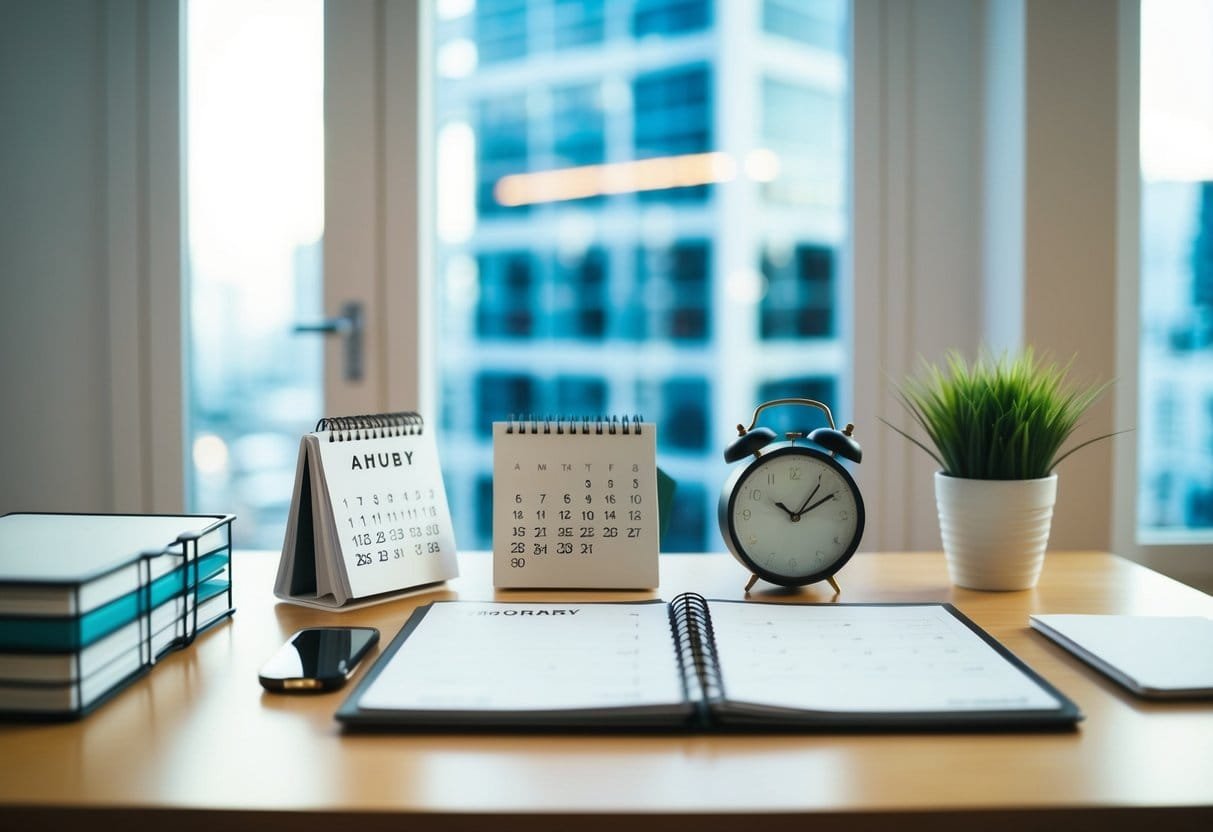
Balancing time effectively enhances productivity. Implementing techniques like the Pomodoro Technique boosts focus and task execution. Establishing routines streamlines daily activities, allowing you to prioritize and achieve more in less time.
Improving Focus and Productivity
Boosting productivity begins with optimizing your focus. Using methods like the Pomodoro Technique can help. This involves working in 25-minute intervals followed by short breaks.
Such timed sessions can sharpen your attention and prevent burnout.
Setting clear goals for your work sessions ensures you have specific objectives, which can further enhance concentration.
Reducing distractions, such as silencing notifications or designating specific times for emails, also plays a crucial role in staying productive.
Establishing Effective Routines
Creating effective routines is essential in managing your time. A consistent daily schedule provides structure, helping you prioritize tasks.
Begin by listing essential tasks that need your attention and allocate specific time slots for each.
Using tools like to-do lists or digital calendars can be very beneficial. By organizing your tasks, you ensure that nothing important is overlooked.
Integrating breaks into your routine is also vital, as they provide opportunities to recharge and maintain energy levels throughout the day.
The Role of Time Management in Decluttering
Time management is integral to decluttering your environment. Efficiently managing your time allows you to dedicate moments for organizing spaces, which directly impacts mental clarity and productivity.
Allocating a specific time each week to declutter prevents the buildup of unnecessary items.
By maintaining a schedule that includes decluttering sessions, you keep your space orderly and functional. This order can reduce stress and increase efficiency, enabling you to focus more effectively on tasks without being distracted by physical chaos.
Tackling Mental Clutter
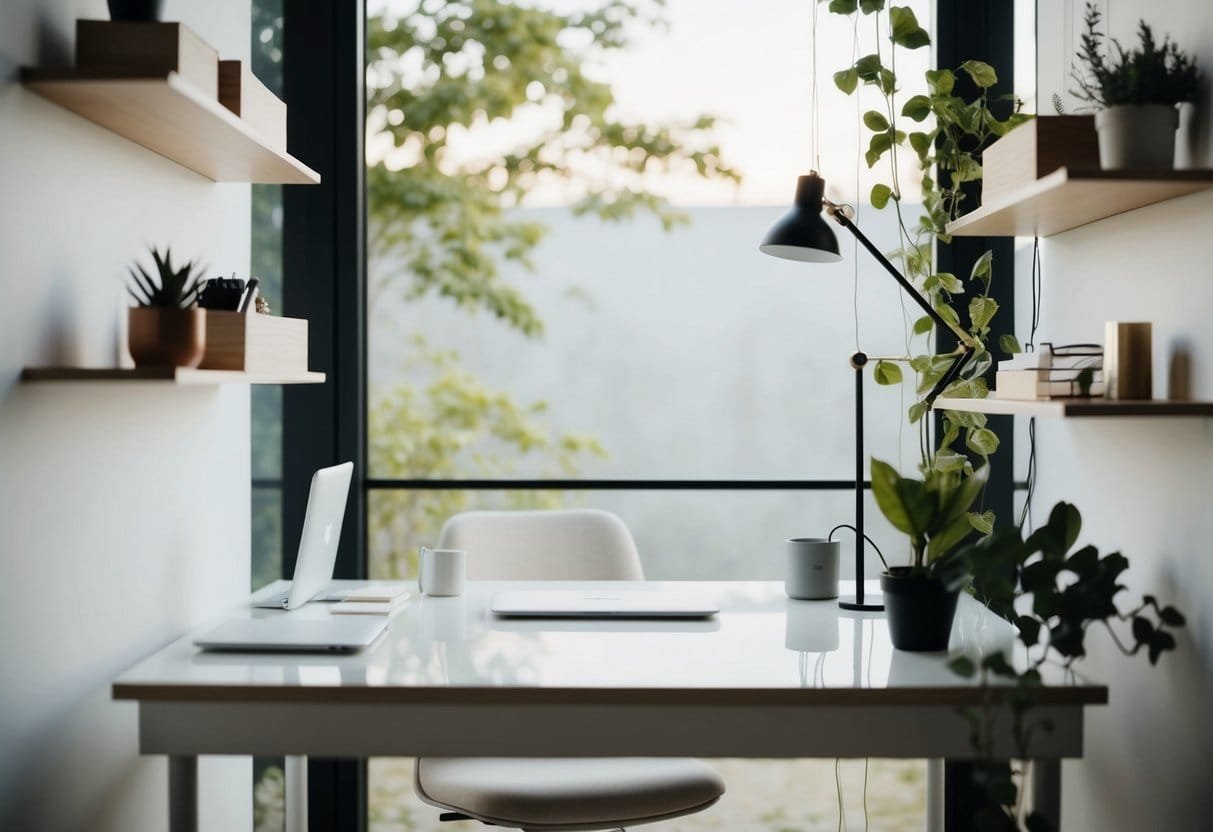
Mental clutter can lead to feelings of being overwhelmed and drained. By recognizing and actively addressing this clutter, you can increase mental clarity and preserve your mental energy.
Recognizing Mental Clutter
Mental clutter includes the excessive thoughts, worries, and anxieties that consume your mental energy. It can be identified by feelings of being constantly overwhelmed or unable to focus on tasks at hand.
When your mind is cluttered, it often results in difficulty making decisions and emotional exhaustion.
Journaling can be an effective way to pinpoint areas where your mental space is being consumed. Regularly reviewing your entries can highlight recurring thoughts and concerns.
Similarly, therapy offers a space to explore and understand underlying issues contributing to mental clutter. By recognizing these aspects, you can begin to clear and organize your thoughts more effectively.
Practices for Mental De-cluttering
There are several practices you can adopt to declutter your mind and gain clarity.
Meditation is a powerful tool for enhancing mindfulness and grounding your thoughts. Even short, daily sessions can lead to significant improvements in focus and mental peace.
Incorporating mindfulness into your routine allows you to stay present, reducing the unnecessary noise in your mind.
Additionally, regular physical activity, like yoga or jogging, can aid in mental clarity by releasing endorphins and alleviating stress.
Establishing a consistent schedule can prevent burnout and improve mental resilience.
Therapy or counseling sessions provide a structured space to process emotions and thoughts, effectively reducing mental clutter. Each of these practices contributes to clearer, more focused mental states.
Healthy Habits for Mind and Body
Developing healthy habits can significantly improve your physical and mental well-being. Mindfulness practices can enhance your self-care routine, while exercise strengthens both the body and mind.
Incorporating Mindfulness Practices
Mindfulness meditation is a powerful tool for enhancing mental well-being. By focusing on the present moment, you can reduce stress and improve emotional regulation.
This practice helps you become more aware of your mental state, allowing you to respond to stressors with calm and clarity.
Incorporating daily mindfulness techniques, like deep breathing or meditation, helps clear mental clutter. Spending just a few minutes each day in quiet reflection can rebuild your energy reserves.
Creating a dedicated space for mindfulness practices may also enhance your overall experience and help integrate this habit into your daily life consistently.
Enhancing Mental Well-Being Through Exercise
Exercise is not just about physical health; it plays a crucial role in mental clarity and energy levels.
Engaging in regular physical activity boosts endorphins, leading to improved mood and a better outlook on life. This can contribute to greater mental well-being.
Activities like yoga or tai chi combine physical exercise with mindful movements, offering dual benefits for mind and body.
You can further supplement your mental health by including varied exercises in your routine.
Aim for consistency, whether it’s a brisk walk, a dance session, or strength training, to maintain well-being and establish a sustainable habit.
Digital Declutter: Managing Your Virtual Space
Digital clutter often accumulates in the form of scattered files, unorganized inboxes, and an overwhelming number of apps. Tackling this clutter can enhance focus and productivity, while promoting better cognitive function.
Coping with Digital Overload
Digital overload can create distractions that hinder your ability to focus effectively. You might find yourself multitasking, leading to fragmented attention and reduced efficiency.
Start by identifying the sources of your digital clutter, such as unnecessary apps, outdated files, and endless notifications.
Create a schedule to regularly review and delete unwanted data. Consider setting up a dedicated time each week for this task.
This practice can improve your cognitive function by reducing mental fatigue and offering a clearer path for focus.
Tools that manage app notifications or monitor screen time can also help you maintain balance.
Tips for a Digital Detox
Undertaking a digital detox can further enhance clarity and well-being.
Start with small steps like turning off non-essential notifications. Allocate screen-free periods during your day to minimize distractions and give your mind a break.
Set specific goals for your detox period, such as limiting social media usage or engaging in offline activities.
Try using folders and labeling systems to keep your digital files organized. This can alleviate the chaos of digital clutter and make retrieving information easier.
Knowing your limits and maintaining boundaries with digital devices can significantly boost productivity and give you a sense of control over your virtual environment.
Cultivating Personal Growth and Relationships
Navigating personal growth and improving relationships requires both self-awareness and intentional action.
Emphasizing self-esteem and fostering connections within a decluttered space forms a strong foundation for enhanced life satisfaction and self-worth.
Building Self-Esteem and Worth
Self-esteem is fundamental to personal development and the quality of your relationships.
By focusing on positive affirmations and recognizing your unique strengths, you can combat negative thought patterns that often undermine self-worth.
Engage in activities that challenge you and celebrate your achievements, no matter how small. This approach helps reinforce a positive self-image and encourages a growth mindset.
Set realistic goals and pursue them diligently. This process builds competence and confidence.
Regular self-reflection allows you to understand and appreciate your progress, enhancing your overall life satisfaction.
Practicing self-compassion during setbacks ensures that you maintain a balanced view of your capabilities.
Embracing mindfulness can help you stay grounded and focused on the present, further strengthening self-esteem.
Fostering Relationships in a Decluttered Space
A decluttered environment lays the groundwork for more meaningful interactions.
Physical and emotional clutter can hinder communication and connection, so streamline your surroundings to highlight areas that promote togetherness. This approach encourages more opportunities to engage authentically with others.
Prioritize time spent with loved ones by eliminating distractions and focusing on active listening.
This not only enhances connection but also shows genuine interest and respect.
Create shared spaces where conversations can flow naturally, strengthening your bonds.
Practicing openness and honesty within these interactions leads to deeper mutual understanding.
Healthy boundaries are crucial in promoting respectful and nurturing relationships.
Clearly communicate expectations and respect others’ limits. This framework supports a balanced dynamic where both parties feel valued, fostering a nurturing environment conducive to growth and connection.
Embracing a Simplified Lifestyle
Adopting a simplified lifestyle fosters mental clarity and emotional stability.
By integrating elements such as gratitude and mindfulness into daily routines, you can cultivate a more serene and fulfilling life journey.
Adopting a Minimalist Approach
Embracing minimalism involves consciously eliminating excess to focus on what truly matters.
This starts with decluttering your physical environment, which can drastically reduce stress and create a sense of peace.
Removing items that do not serve a purpose or bring joy allows for better relaxation and boosts creativity.
Employing techniques like mindful breathing and positive affirmations helps in maintaining clarity.
Simplifying your digital space can also significantly enhance productivity and mental clarity.
Evaluate commitments and streamline them to free up time for what is truly important in your life.
Letting Go and Moving Forward
Letting go isn’t just about clearing out your closet; it’s about releasing emotional baggage and outdated ideas.
Practicing gratitude can transform your outlook, enabling you to appreciate what you have rather than what you lack.
This shift in perspective reduces stress and enhances emotional well-being.
Positive affirmations can aid in letting go of negativity. Replace critical thoughts with empowering statements.
This improves decision-making and paves the way for personal satisfaction.
Integrating these practices into your routine fosters resilience and helps you move forward with confidence.
Frequently Asked Questions
Decluttering is not only about organizing your physical space, but also brings psychological benefits and mental clarity. This section explores the specific positive impacts on mental well-being, stress reduction, and ways to maintain a clutter-free environment.
What are the psychological benefits of decluttering your living space?
Decluttering your space can lead to increased focus, reduced anxiety, and improved mood.
By removing unnecessary items, you create a more peaceful environment, which can translate to mental clarity and emotional stability.
Can you explain the Feng Shui principles connected to decluttering?
Feng Shui emphasizes balance, energy flow, and harmony in your living space.
Decluttering aligns with these principles by removing obstacles and allowing energy to flow freely, enhancing the sense of peace and positivity in your home.
What strategies are effective for maintaining a decluttered home?
To maintain a decluttered home, establish a routine where you regularly assess and organize your belongings.
Implement organizational systems, set rules for new purchases, and allocate specific places for everyday items to prevent clutter from accumulating again.
How does the process of decluttering influence your mental well-being?
Decluttering helps clear mental clutter, just as physical clutter is cleared.
It allows you to feel more in control, increases your sense of accomplishment, and provides mental space to focus on more important tasks, ultimately improving psychological resilience and peace of mind.
What is the connection between decluttering and stress reduction?
A tidier environment reduces sensory overload and distractions, which can significantly lower stress levels.
By creating a more orderly space, you minimize chaos and bring about a sense of calm, making it easier to relax and recharge.
What are the recommended steps to begin decluttering for improved mental clarity?
Start by identifying areas that cause the most stress and tackle them one at a time.
Sort items into categories—keep, donate, recycle, or discard—and commit to making incremental progress.
This structured approach encourages momentum and can significantly enhance your mental clarity.
Continue your decluttering journey.
These resources offer further insights and tips:
- “The Life-Changing Magic of Tidying Up: The Japanese Art of Decluttering and Organizing” by Marie Kondo: A global phenomenon, this book introduces the KonMari Method, focusing on keeping only items that “spark joy.”
- “Spark Joy: An Illustrated Master Class on the Art of Organizing and Tidying Up” by Marie Kondo: A visual guide to the KonMari Method, perfect for those who prefer illustrations.
- “Essentialism: The Disciplined Pursuit of Less” by Greg McKeown: Explores the philosophy of essentialism, focusing on prioritizing what’s truly important and eliminating the rest.
- “Project 333: The Minimalist Fashion Challenge That Proves Less Really Is So Much More” by Courtney Carver: Focuses on minimalist fashion and creating a capsule wardrobe, a great way to declutter your closet.
- “Goodbye, Things: The New Japanese Minimalism” by Fumio Sasaki: Offers a perspective on minimalism from a Japanese viewpoint, focusing on the psychological benefits of owning less.
- “Outer Order, Inner Calm: Declutter and Organize to Make More Room for Happiness” by Gretchen Rubin: Connects the physical decluttering of our environments to our inner emotional states.

